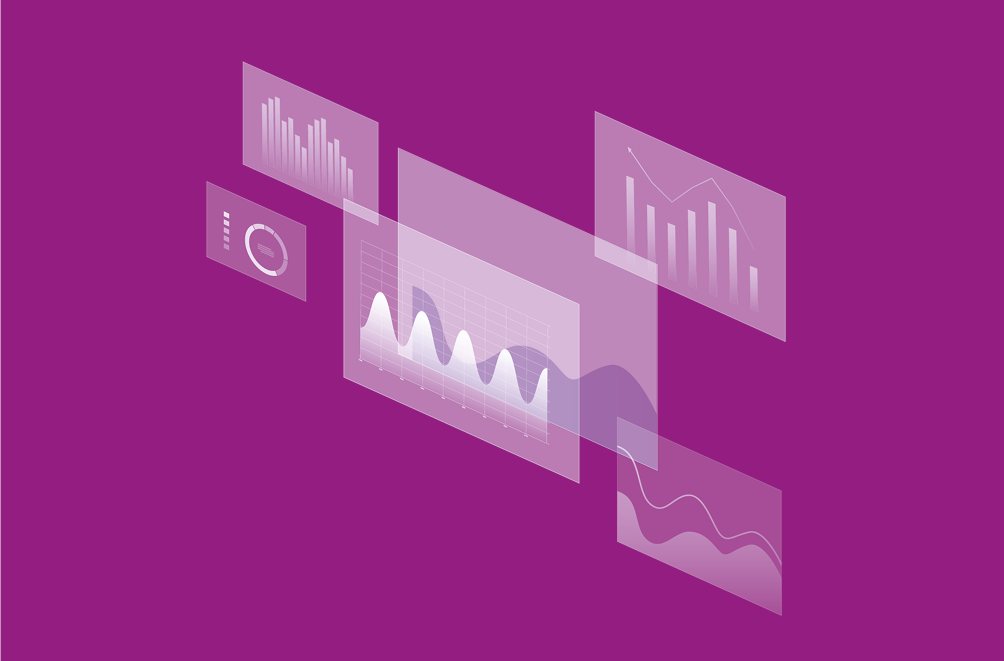MenU
CHAPTER 5
The Mudano – releasing the potential of data
Gemba
Experience
To take action, one must first make a decision. It is exponentially more difficult to make a decision without having all the facts to hand. Gemba is an example of an Obeya concept and is designed to facilitate decision-making, fast. All underpinned by data.
What is Obeya?
Coming from the Japanese, meaning ‘big room’ an Obeya room originates from lean manufacturing principles. The fundamental purpose of the Obeya process is to solve problems.
It accelerates the decision-making process by providing a naturally collaborative environment for stakeholders to interact in.
The Obeya process sees teams standing and engaging directly with each other and with data. It does without paper and puts decision-makers into a technology-fuelled room designed to increase the velocity of decision making. Data is visually engaging and stakeholders can use the touch screens to involve themselves directly with it.
The Mudano Gemba room is a space to discover, where stakeholders can visualise solutions and process them. They are encouraged to communicate, to collaborate, to see the bigger picture and engage with issues and proactively create solutions for them.
The process is as important as the technology and organisations should not feel they need to allocate masses of resource immediately to achieve results. You can begin in an iterative manner with a few monitors and scale as the value of the process becomes apparent in the organisation.
Obeya is expanded by technology, not dependent upon it. Its primary function is to facilitate a different way to problem-solving to expedite the decision-making process.
Fostering Trust and driving decisions
One core foundation of the Obeya room principle is that it helps key personnel foster trust in the decision making process.
Obeya places decision-makers at the heart of data, whether that is the boardroom, the classroom or teams on the ground. Obeya can be used for teams to gain trust in data, understand where its application can provide the most value and act upon it.
By starting at board level, the Obeya concept can be used to foster a better culture of data within an organisation in order to reap the value of data-driven decision making.
Why it works
The data chain as it exists in a corporate environment can often go through multiple touchpoints in the form of different stakeholders and departments before it reaches key personnel i.e. the board. In this manner, there is often no golden source of truth in the data as everyone has a different take on what the data means for them and their departments as defined by their targets and goals. The issue of data clarity is compounded when given data is usually lacking accompanying insight or presented flatly in formats which decision-makers may not immediately engage with. The Obeya room concept brings data to key personnel in a highly impactful, visual and experiential manner. They are encouraged to move, to touch, to collaborate, to question and to decide and are ultimately more engaged with the process as they become a direct part of it. Good data practices are driven due to the visibility of data by the board at an early stage. The scenario where data is diluted or distilled is averted due to the early convergence of data and decision-makers. The Obeya concept energises the experience of work and decision-making, underpinned by live data insights that ultimately brings about greater value into a data-led culture.

An Obeya room is a place of collaborative learning where teams are encouraged to evaluate issues, see problems as they arise and collaborate efficiently to resolve them.
How it works
Obeya users move around the space in a liberating manner and interact with data in an informative and intuitive way. Each section of the Obeya room is a process that encourages collaboration and movement. Stakeholders literally ‘think on their feet’ and are removed from the enclosed nature of a boardroom. This is an essential function of Obeya because the concept, method and process of decision-making is as important as the technology for the empowerment and freedom that it bestows on stakeholders.
Why you need it
- Take data at face-value at board level and make fast decisions
- Tackle the decision-making process from different angles.
- Facilitate ‘on-feet’ thinking
Next Article
SCALING INNOVATION
Previous Article
CUSTOMER ANALYTICS

